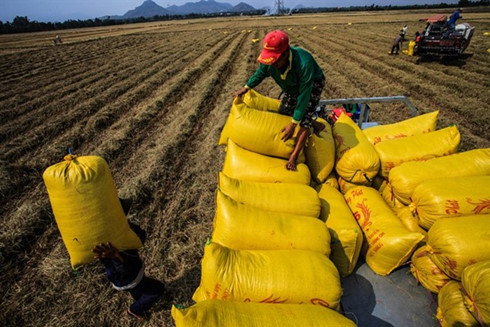Summit mulls financial inclusion for all
- Price up for high-end property
- Priceless artifacts involving the main character of “Biet dong Sai Gon” movie to be given to museum
- Seminar discusses ways to improve rice competitiveness
This rapid change presents challenges in terms of management, monitoring and risk of information and system security, said Nguyen Thi Hong, Deputy Governor of the State Bank of Vietnam.
“Therefore, it is critical to harmonize the goals of financial innovation, integration and consumer protection to maximize the benefits of financial inclusion,” Hong told the Asia-Pacific Financial Inclusion Summit 2017 held in Hanoi on March 21.
 |
Despite great progress made over the past decades in financial inclusion worldwide, some two billion adults remained unbanked, more than half of them in the Asia-Pacific region, she said.
The two-day event brought together over 450 key stakeholders, leaders and practitioners to further the financial inclusion agenda in the region.
Now in its second year, the Summit is organized by the Citi Foundation and the Foundation for Development Co-operation (FDC) in partnership with the Banking with the Poor Network and The Economist Group. This year the State Bank of Vietnam (SBV) is official host of the summit.
Themed “Advancing Financial Inclusion in a Digital Age”, the summit explored the opportunities and challenges of the next generation of financial inclusion, and showcased the latest technology and innovations in financial products and services for the unbanked and underserved.
The deputy governor said Vietnam had been active in common efforts of the international community to promote financial inclusion.
“Vietnam will continue to create a more favourable environment to help people and businesses easily and effectively access financial services, contributing to economic development and sustainable poverty reduction,” she said.
She added that in the process of building national strategy on inclusive finance, the Government has focused on women, farmers, small-and-medium-sized enterprises and micro-scale businesses.
Michelle Curry, CEO of FDC called the impact of the digital age on financial inclusion “arguably the greatest financial reform of our time” and added that it was “both encouraging and inspiring to see such dedication to reform evidenced by the large number of attendees at this sellout summit”.
“The inclusive finance ecosystem is evolving to include not only financial service providers, both banks and non-banks, but new players, like mobile money providers and e-money operators, to name a few,” said Brandee McHale, President of the Citi Foundation and Director of Corporate Citizenship at Citi.
“What we will explore at this year’s summit is the need to balance new innovative technological advances and creative partnerships with policy that will continue to not only help drive financial inclusion for low-income populations but also protect vulnerable populations,” she added.
Vietnam’s efforts to provide preferential credit to the agricultural sector were also discussed at the summit, as was the fact that few households are eligible for bank loans due to lack of a legal framework for the development of microfinance institutions to help poor people access financial resources.
The Government proposed a VND100 trillion credit package by mobilising from commercial banks to support businesses, high-tech agricultural projects and clean agricultural products with preferential lending conditions.
"However, access to the loans is still limited since banks consider their profits while farmers and households often suffer weather disasters," he said. "Vietnam only has five licensed microfinance institutions while it has more than 12,000 communes."
Hoe said the Government should complete a legal framework to create favourable conditions for development of microfinance institutions.
Le Thi Lan, Director of Community Finance Resource Centre (CFRC) agreed, adding that black credit has been reduced where microfinance activities are available.
“However, the number of institutions has been modest because of capital shortage, an unsuitable legal framework and a lack of special principles for their operation,” Lan said.
For example, the requirement for high liquidity rate is not suitable to microfinance as most loans are small, and bad debts are fewer. High liquidity requirements would burden capital returns.
She suggested policies to help microfinance access by both local and foreign credits, as well as land and technical support policies.

